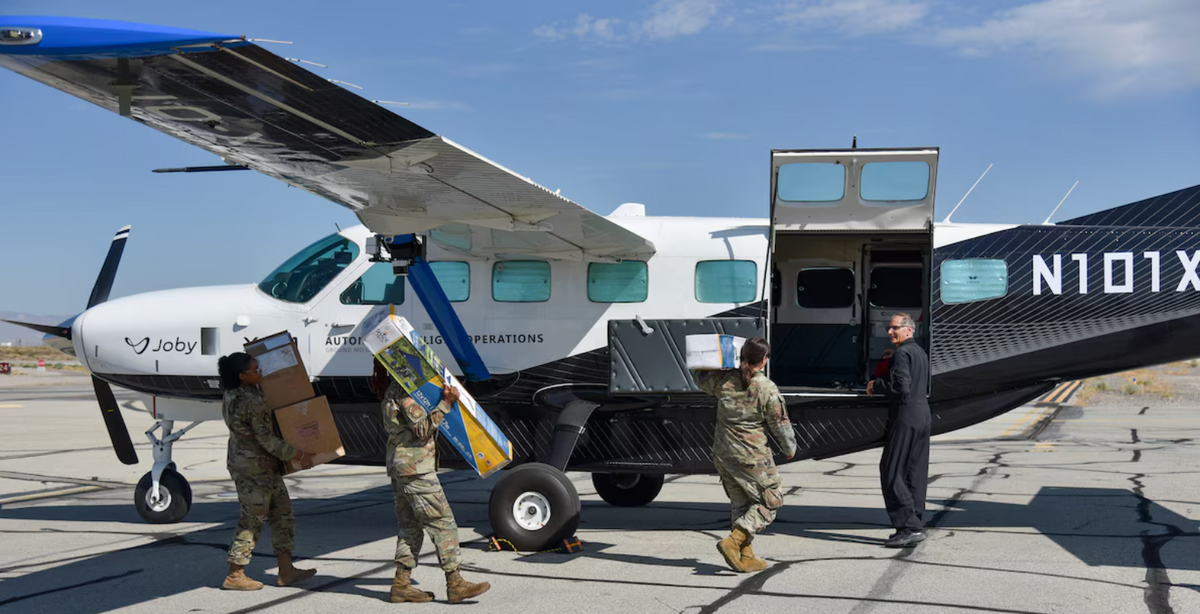The U.S. Air Force is continuing to test autonomous cargo planes, announcing this week that it had used self-flying aircraft from the commercial tech firms Joby and Reliable Robotics to fly “daily autonomous logistics missions” during a military exercise held in California earlier in August.
Both the firms started with a Cessna 208B Grand Caravan aircraft, a small turboprop model that can carry about a dozen people if outfitted with passenger seats. They then equipped each plane with autonomous flight technology that allowed it to taxi, take off, fly to a destination, and land independently.
Outfitted to carry freight for the Air Force exercise, each aircraft had the capability to fly roughly 1,150 miles with a 1,200-pound load. Over the course of the event, the two firms flew a combined total of 47 flights covering more than 6,600 miles, hauling cargo such as aircraft parts and supplies.
According to Joby, these particular flights were monitored by an onboard safety pilot, but future flights have the option to use a remote supervisor on the ground instead, using only a backpack-carried laptop and a satellite communications terminal.
The Air Force said the purpose of its August 5-9 exercise known as “AGILE FLAG 24-3” was to test their ability to generate combat air power while maneuvering and sustaining their forces in dynamic, contested environments across California and other locations in the western United States. And the exercise was the service’s latest experiment with autonomous planes, following trials in February with planes from Pyka and Xwing.
“Previously, we faced a tough choice: either use a cargo aircraft with all the associated expenses or forgo the flight altogether, which created difficult decisions for warfighting commanders,” Col. Max Bremer, Air Mobility Command Special Access Program management officer, said in a release. “The return on investment with this technology is significant. By using it to handle smaller cargo, we can preserve cargo aircraft for more critical tasks like transporting large parts, engines, or weapons. This not only enhances the overall capability of the cargo fleet but also ensures they are used where they are most needed.”
The Cessnas are also far cheaper to operate compared to traditional Air Force cargo aircraft such as a C-130J Hercules or a C-17A Globemaster III, the Air Force said.
Funding for the exercise came from Autonomy Prime, a technology program within the Prime division of AFWERX, a directorate of the Air Force Research Laboratory (AFRL). The program partners with the private sector to accelerate testing and develop affordable technology. Accordingly, AFWERX has awarded both Joby and Reliable Robotics Small Business Innovation Research (SBIR) Phase Two and Phase Three contracts to conduct autonomous flight trials and demonstrate the capability in an operationally relevant environment.
















